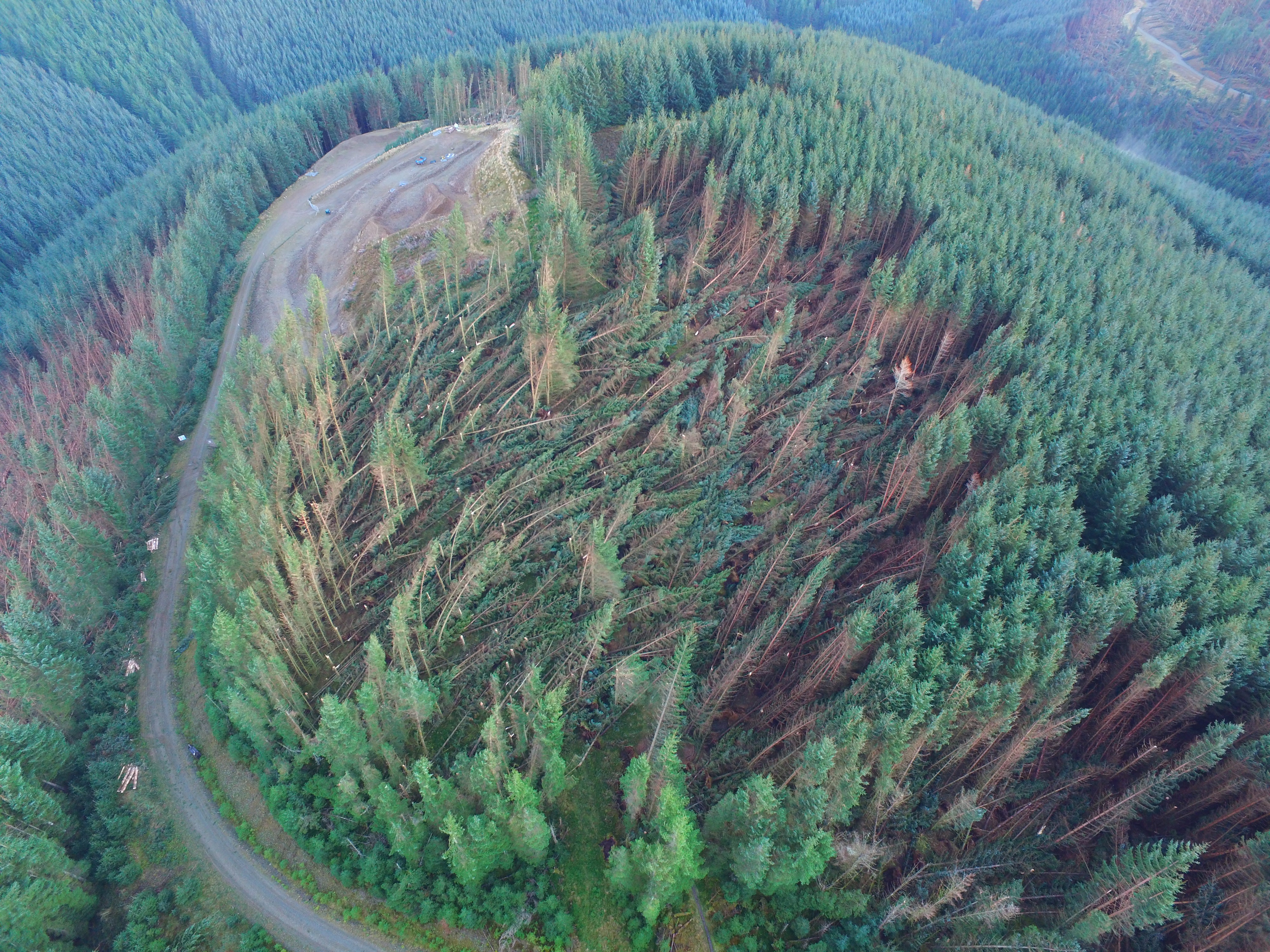Woodland clean up under way after eight million trees damaged by Storm Arwen
Scottish Forestry is working with Forestry and Land Scotland and the Confederation of Forest Industries.

Your support helps us to tell the story
From reproductive rights to climate change to Big Tech, The Independent is on the ground when the story is developing. Whether it's investigating the financials of Elon Musk's pro-Trump PAC or producing our latest documentary, 'The A Word', which shines a light on the American women fighting for reproductive rights, we know how important it is to parse out the facts from the messaging.
At such a critical moment in US history, we need reporters on the ground. Your donation allows us to keep sending journalists to speak to both sides of the story.
The Independent is trusted by Americans across the entire political spectrum. And unlike many other quality news outlets, we choose not to lock Americans out of our reporting and analysis with paywalls. We believe quality journalism should be available to everyone, paid for by those who can afford it.
Your support makes all the difference.Around eight million trees in Scotland were damaged or affected by Storm Arwen forestry chiefs estimate.
Scottish Forestry is working with Forestry and Land Scotland and the Confederation of Forest Industries (Confor) to plan the recovery after the storm on November 26, which affected at least 4,000 hectares of woodland in Scotland.
The most intensive damage runs down the east coast, across the Borders and East Lothian stretching into Galloway, while another swathe of damage runs through Banffshire, Aberdeenshire, Kincardineshire, Angus and into Perthshire.
The 4,000 hectares, equivalent to around eight million trees, includes many still standing next to windblown areas which will need to be felled because they are more vulnerable as their root systems have been weakened.
The impact is evident in the distressing images of flattened forests and woodlands which will take decades, if not centuries, to recover from
Woodland managers are using a new mapping tool, developed by Forest Research and Scottish Forestry, which uses satellite data to gain an initial understanding of where the damage has occurred, without the immediate need for extensive and potentially risky site visits.
Environment Minister Mairi McAllan said: “Storm Arwen provided a salutary lesson of the power of nature and the challenge of climate change. Our people suffered and so too did our natural environment.
“The impact is evident in the distressing images of flattened forests and woodlands which will take decades, if not centuries, to recover from. Their loss reminds us of the significant role trees play in our lives, communities, economy and wellbeing.
“Behind this is a monumental clear-up operation which is being undertaken by large and small woodland owners. Whilst this is being carried out, the message to the public is not to enter into affected forests until they are made safe.
“Forestry might be a long-term business, but getting to grips with managing the windblown timber has already begun. As more accurate information becomes available, Scotland’s forest industry will be taking decisions on handling the extra volumes of timber that needs to be harvested.
”Through Scottish Forestry, advice, information and assistance is being made available to woodland owners and the forestry sector to help manage the aftermath of Storm Arwen.”
Helicopter and ground-based surveys are also being carried out to add accuracy to the data being gathered to help the sector plan the recovery.
Most of the trees that have been flattened will be removed over the next year and sent to wood processors across Scotland and in time the forests will be replanted.
Andy Leitch, deputy chief executive of Confor, the trade body for forestry and wood-using companies, said: “The clean-up after the storm – and the work needed to remove the windblown timber, make safe the remaining trees and get the timber to wood processors – will take time and effort.
“However, Confor is fully committed to working in partnership with the public forestry bodies to make that happen in a speedy and efficient manner.”
Around 62 million trees are planted every year in Scotland and the country’s forests and woodlands cover around 1.45 million hectares, totalling around 2.9 billion trees.